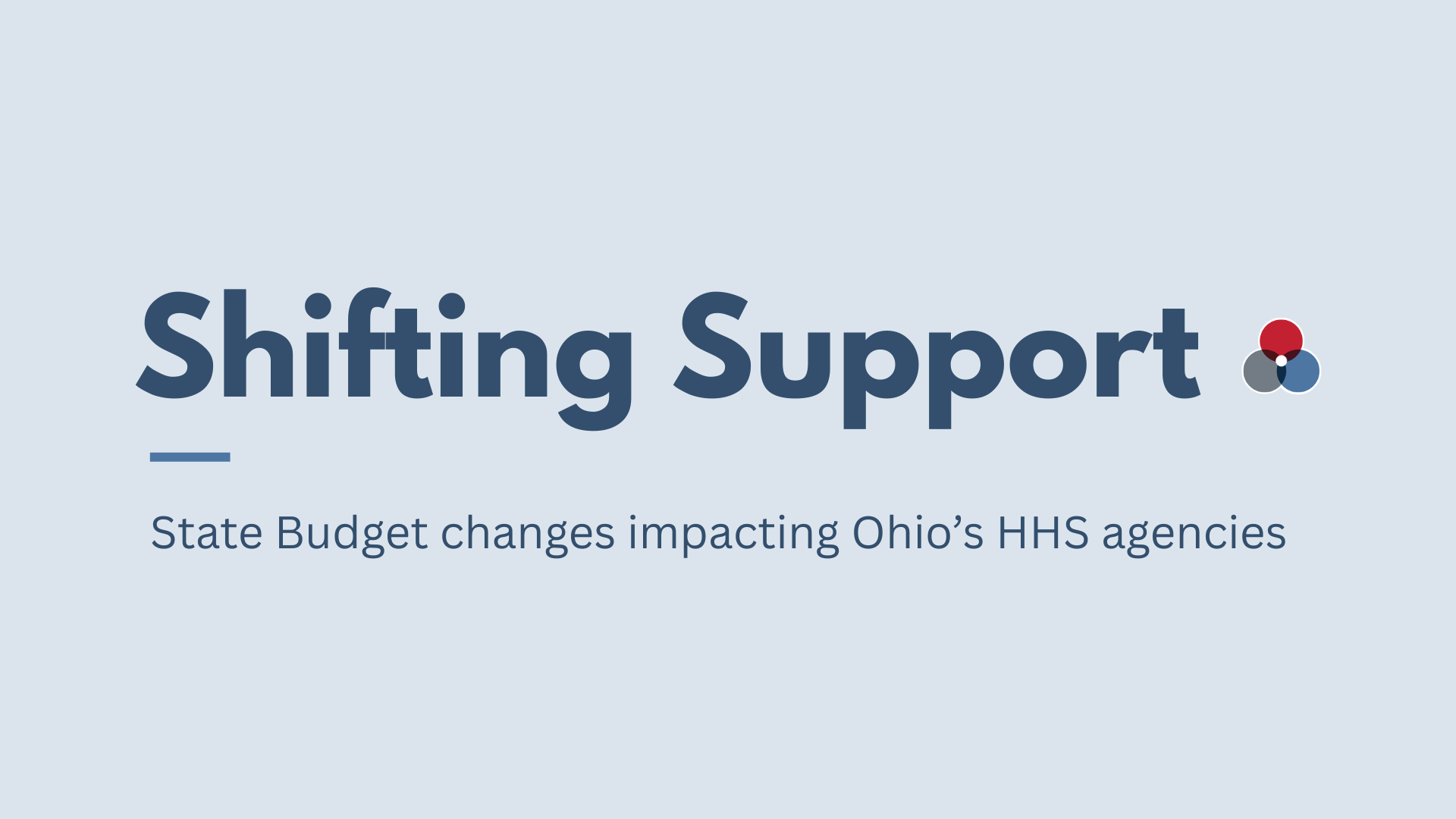I NTRODUCTION
After signing the Higher Education Act of 1965, President Lyndon Johnson returned to San Marcos, Texas, a place where he had once taught impoverished schoolchildren in a segregated environment, and recalled his experience as a teacher stating, “…this nation could never rest while the door to knowledge remained closed to any American.”[1] Through this Act, and another bill passed in the same year that created Medicaid, the Johnson administration aggressively pursued a War on Poverty, creating policies that sought to increase economic mobility through access to education, health care, housing and food. Since that time, researchers, academics and policymakers have looked to these programs as vehicles for reform, often splitting ideologically on the effectiveness of these efforts.
As the largest cohort of enrollees in Medicaid, children are one of the most significant beneficiaries of program, though questions remain as to the ways in which Medicaid can, and should, address the systemic issues of economic mobility and intergenerational poverty. While health is critical, it is likely more accurate to suggest that a child’s future economic success is dependent on a myriad of influences, including issues as ambiguous as geography and as specific as exposure to lead. This Issue Brief, however, builds on the previous work looking at the social determinants of health by focusing on the role of education. To borrow from President Johnson, if education is the door, in what ways has Medicaid become, or should become, the key?
While health is critical, it is likely more accurate to suggest that a child’s future economic success is dependent on a myriad of influences
KEY TAKEAWAYS
- Education is a key social determinant of health, but health has a significant influence on educational performance and attainment
- When children have better access to health care in educational contexts, outcomes in both education and health improve and the long-term economic prospects of children improve
- There are promising models of school-based health in Ohio and there is the potential for greater adoption through current policy and future policy developmentTHE CONNECTION BETWEEN HEALTH AND EDUCATION
Half of childbirths in Ohio are financed by Medicaid.[2] Children’s health needs, however, continue well into adolescence and are very influential on a child’s future educational and economic success. With nearly half of the year spent in school, educational settings seem like natural locations for children to access health services. Medicaid, with its historical ties to the war on poverty, can be seen as a vehicle for this access from which many Ohio schoolchildren benefit, given the numbers of kids already covered.
Economic mobility is the concept that individuals, within or between generations, are able to transition from lower income and wealth levels to higher ones. Often, this concept, that economic success is attainable through individual determination, is a part of our national self-concept we call “The American Dream.” However, data indicates that Americans’ attitudes on the actuality of mobility are in decline [3] – something which recent research has reinforced. Notably, work from Stanford Professor Raj Chetty argues inequality has persisted in the United States with race, gender and zip code being significantly influential on an individual’s future economic success.[4] Still, evidence shows that the potential for economic success is often not singularly determined by the quality of schools alone, but rather by the ecosystem of things that can affect a child’s success, including health.[5]
Research that looks at the intersection between access to health care and educational outcomes suggests that greater access to care improves educational performance.

Figure 1: Data from Georgetown University Health Policy Institute[/caption]
Research that looks at the intersection between access to health care and educational outcomes suggests that greater access to care improves educational performance. In a recent paper from the National Bureau of Economic Research (NBER), the authors concluded that there is longitudinal evidence to suggest that the Medicaid expansions for children of the 1980s and 1990s improved health and long-run educational attainment in the United States. [6] This includes greater high-school completion for non-white students as well as greater college completion for white students. What’s more, these expansions in eligibility have been shown to increase economic mobility, generally.
The NBER study is not in isolation regarding the benefits of health care access in terms of educational achievement. Data has demonstrated that greater access to care has led to lower absenteeism and decreased dropout rates, both of which are key determinants of scholastic achievement. [7] [8] There are also benefits in relation to health expenditures and outcomes as well, including reductions in substance abuse, better utilization patterns, and lower teen birth rates. [9] [10] [11] Simply, when children are able to address their health care needs, they are better students and have a better chance of economic success later in life.
MEDICAID IN SCHOOLS
Since children are in school settings nearly half the days of the year, access to health care in educational environments has a natural connection. Since 1988, School Based Services (SBS), which is known in Ohio as the Medicaid Schools Program (MSP), has been an allowable activity for states in their Medicaid programs to provide health-related services to students eligible for services under their individualized education program (IEP) under the Individuals with Disabilities Education Act (IDEA).[12] In broad terms, IDEA allows students with disabilities to access key medical services while in a school setting, and as long as the provided services are medically necessary, MSP will reimburse the schools for some services identified in the IEP when provided to students who are Medicaid eligible. This subsequently, allows children to achieve their educational goals, while affording schools an opportunity to obtain financial reimbursement for those services. Services associated with MSP often include physical therapy, occupational therapy, speech pathology, audiology services and other medical services that assist the student on a daily basis.
Data has demonstrated that greater access to care has led to lower absenteeism and decreased dropout rates, both of which are key determinants of scholastic achievement.
Since 2008, Ohio has elected, through its state plan, to offer MSP. [13] [14] In order to receive services, the Centers for Medicare and Medicaid Services (CMS) has required that all services stem from an actively enrolled Medicaid medical practitioner.[15] During the last state budget, MSP was designated by a new line item (657401) and the state claims a match rate of 50 percent. The expenditure authority for this program obligates $295,000 in General Revenue dollars per year, bringing the total program expenditure for these services to nearly $1.2 million over the biennium. There was also the creation of a line item for Medicaid Administrative Claims (657601). These dollars provide schools with reimbursement for costs associated with administrating Medicaid benefits to all Medicaid-eligible students, including those who do not have an IEP. These services can include the costs of enrolling eligible children in Medicaid and assisting those who are already enrolled to access the benefits available to them. The Ohio Department of Education (ODE) receives claims and financial reports from local education agencies and then submits the claims to the Ohio Department of Medicaid for reimbursement. The current appropriation level for this program is about $750,000 per year, though the reimbursement for services comes from within Medicaid’s general budget.[16]
SCHOOL-BASED HEALTH PROGRAMS
While the MSP program is the traditionally thought of way that Medicaid is integrated into school settings, there are other examples of health being integrated into educational settings, not limited to Medicaid. This type of integration, is typically referred to as School-Based Health Centers (SBHC) and often involves the colocation of medical services in schools. In fact, there are several examples in the state of Ohio where these programs are being implemented and, what’s more, the state recently released a “toolkit” to assist schools and providers in perpetuating the model.
While the MSP program is the traditionally thought of way that Medicaid is integrated into school settings, there are other examples of health being integrated into educational settings, not limited to Medicaid. This type of integration, is typically referred to as School-Based Health Centers (SBHC) and often involves the colocation of medical services in schools.
There are two notable SBHC models which demonstrate unique applications of this service. In Cincinnati, Interact for Health (Interact) led a public-private initiative to improve health care access for area students.[17] Since its inception in 1999, this program has led to the creation of 30 SBHCs serving more than 28,000 students. This program leverages a Community Learning Center (CLC) model, meaning the schools work with local providers such as hospitals and Federally Qualified Health Centers (FQHCs) to deliver services in specialized, fixed environments. Services provided by SBHCs not only address the needs of students with special needs, they serve all students. According to data collected by Interact for this program, the health status of children improved, emergency visits declined and every dollar invested generated nearly two in social benefits such as service cost, educational performance and savings to families.[[18]](https://www.interactforhealth.org/docs/Rx for Success executive summary.pdf)
In addition to the Cincinnati model, which involves a multitude of partners and districts in mainly fixed locations, MetroHealth hospital in Cleveland has also developed a SBHC in collaboration with the Cleveland Metropolitan School District (CMSD). As opposed to a fixed location, MetroHealth deploys a mobile unit which can provide well-child visits, physicals, immunizations, behavioral health screenings and urgent care. Given the high transient rates of students within CMSD, the mobile unit displaces the traditional fixed costs of a SBHC model by bringing clinical services to students through the use of the vehicle. When looking at outcomes, MetroHealth has noted that 74 percent of children enrolled in their program have received vaccinations, which is higher than the national rate of 66 percent, as is also a key metric of performance for Ohio’s Medicaid managed care plans.[19]
In May of 2018, the Ohio Departments of Education, Medicaid, Mental Health and Addiction Services, Health and the Governor’s Office of Health Transformation released the School-Based Health Care Support Toolkit. [20] This document outlines a vision for SBHCs in Ohio and provides a number of resources regarding operationalization, sustainability and performance. Notably, this includes templates for consent agreements that can allow for better coordination of services between schools, providers and parents. In both educational and health care settings, individual data is protected through federal and state law. In education, this is the Family Education Rights and Privacy Act (FERPA) and in health care it’s the Health Insurance Portability and Accountability Act (HIPPA). With these consent agreements in place, parents can opt to allow the schools and providers to coordinate services across the spectrum. If, for example, a student has a high absentee rate, an SBHC can provide an intervention to determine if a health condition is causing that outcome. If it is, and a medical intervention is applied, it can potentially solve both issues and provide all parties with critical data that will improve outcomes.
MetroHealth has noted that 74 percent of children enrolled in their program have received vaccinations, which is higher than the national rate of 66 percent, as is also a key metric of performance for Ohio’s Medicaid managed care plans.
It is important to note that SBHCs in Ohio, while growing in presence, are not widespread. Also, due to the insufficiency of Medicaid reimbursement relative to cost, the above examples are reliant on grants. It is often this issue of revenue sustainability that prevents many providers from offering SBHC services or collaborating with schools for Medicaid covered children. For many schools that do offer these services to children covered through Medicaid, they often rely on FQHCs to deliver care as FQHCs have higher Medicaid reimbursement rates. While children can benefit from this level of access, there is a very realistic concern that improved outcomes can ultimately lead to less utilization, thereby creating a disincentive in providing care in school settings to what is an already low-cost population. [21]
OPPORTUNITIES
Beyond the toolkit, the state has outlined several policies to incentivize improved academic performance through Medicaid. On one hand, the Comprehensive Primary Care initiative (CPC) has elements that measure well-care visits, weight assessments and provide resources to providers who perform well in these areas. Beyond this, the Ohio Department of Medicaid has indicated that it would like to design incentives, beginning January 2019, which will tie in managed care plans capitation payments to improved academic performance. These policies should be pursued and the potential to tie-in payments to performance in this area is sound policy, but more can be done.
Ohio’s managed care performance reported in the Healthcare Effectiveness Data and Information Set (HEDIS) shows that there is significant room for improvement across all the child-specific measures.[[22]](http://medicaid.ohio.gov/Portals/0/Medicaid 101/QualityStrategy/Measures/SFY2017-HEDIS-Aggregate-Report.pdf) And while there are a number of providers offering Medicaid services to children in schools, the penetration rate is low and this sort of incentive could lead to more effective contracting of rates between the plans and providers. In some states, for example, the state has mandated payment for SBHCs by managed care.[23]
Beyond managed care, schools should consider expanding upon Medicaid Administrative Claiming for non-IEP services. Not only could this allow the breadth of health services in schools to expand, but it could also act as another opportunity for revenue for school districts that are trying to provide students with as many educational supports possible. The state should also explore ways in which school nurses can become eligible Medicaid providers. In 2015, CMS reversed previous guidance and now allows public schools to reimburse for Medicaid services in school settings.[24] While guidance would still need to be developed on the state and federal levels, this would decentralize the services now made available by provider organizations and instead place them within the scope of services schools provide. With that said, schools have not traditionally acted in this role, so any potential for this policy initiative would need significant stakeholder input before moving forward.
CONCLUSION
The links between education and health are clear and consistent, and there is ongoing research by the Health Policy Institute of Ohio (HPIO) which demonstrates these connections in a buckeye-specific way.[25] In Medicaid, which is the largest single source of health coverage for children, Ohio has pursued a number of policies that leverage the natural connection between these areas of social service. With that said, many providers and schools are still reluctant to pursue opportunities in this space due to complexity and sustainability. More school districts, providers and managed care plans should examine districts with high rates of Medicaid penetration and use the existing tools to determine if more can be done to achieve common goals. Beyond this, the state should see this as an opportunity to leverage policies that can improve Ohio’s dismal performance in childhood health which, according to research, will benefit Ohio’s youth now and well into the future.
[1] Johnson, Lyndon B. "Remarks at Southwest Texas State College Upon Signing the Higher Education Act of 1965." Lecture, Southwest Texas State College, San Marcos, May 29, 2018.
[2] Morse, Susan. "Half of States Report 50% or More of Births Financed by Medicaid." Health care Finance News. March 30, 2017. Accessed May 31, 2018. http://www.healthcarefinancenews.com/news/half-states-report-50-or-more-births-financed-medicaid.
[3] Brownstein, Ronald. "Americans Weigh in on the State of Economic Opportunity." The Atlantic. January 30, 2016. Accessed May 30, 2018. https://www.theatlantic.com/business/archive/2016/01/heartland-monitor-america-economy/433938/.
[4] Honner, Patrick. "Moving On Up: Teaching With the Data of Economic Mobility." The New York Times. May 03, 2018. Accessed May 30, 2018. https://www.nytimes.com/2018/05/03/learning/lesson-plans/moving-on-up-teaching-with-the-data-of-economic-mobility.html.
[5] Cohen, Rachel M. "Education Isn't the Key to a Good Income." The Atlantic. September 26, 2017. Accessed May 30, 2018. https://www.theatlantic.com/education/archive/2017/09/education-and-economic-mobility/541041/.
[6] Cohodes, Sarah, Daniel Grossman, Samuel Kleiner, and Michael F. Lovenheim. "The Effect of Child Health Insurance Access on Schooling: Evidence from Public Insurance Expansions." May 2014. Accessed April 10, 2018. http://www.nber.org/papers/w20178.pdf.
[7] Foy, James E., and Kathy Hahn. "School-based Health Centers: A Four Year Experience, with a Focus on Reducing Student Exclusion Rates." SpringerLink. March 10, 2009. Accessed May 30, 2018. https://link.springer.com/article/10.1186/1750-4732-3-3.
[8] Kerns, S. E., M. D. Pullmann, S. C. Walker, A. R. Lyon, T. J. Cosgrove, and E. J. Bruns. "Adolescent Use of School-based Health Centers and High School Dropout." Archives of Pediatrics & Adolescent Medicine. July 2011. Accessed May 7, 2018. https://www.ncbi.nlm.nih.gov/pubmed/21383256.
[9] Robinson, W. La Vome, Gary W. Harper, and Michael E. Schoeny. "Reducing Substance Use among African American Adolescents: Effectiveness of School-based Health Centers." Current Biology. October 07, 2015. Accessed May 12, 2018. https://experts.umich.edu/en/publications/reducing-substance-use-among-african-american-adolescents-effecti.
[10] Parasuraman, S. R., and L. Shi. "The Role of School-based Health Centers in Increasing Universal and Targeted Delivery of Primary and Preventive Care among Adolescents." The Journal of School Health. August 2014. Accessed May 30, 2018. https://www.ncbi.nlm.nih.gov/pubmed/25040121.
[11] Ricketts, Sue A., and Bruce P. Guernsey. "School-Based Health Centers and the Decline in Black Teen Fertility During the 1990s in Denver, Colorado." September 2006. Accessed May 20, 2018. https://www.ncbi.nlm.nih.gov/pmc/articles/PMC1551953/.
[12] "Medicaid in Schools." April 2018. Accessed May 2018. https://www.macpac.gov/wp-content/uploads/2018/04/Medicaid-in-Schools.pdf.
[13] United States. The Ohio Department of Education. The Ohio Medicaid Schools Program. Accessed May 23, 2018. http://education.ohio.gov/Topics/Finance-and-Funding/Programs/The-Ohio-Medicaid-Schools-Program.
[14] Ohio Revised Code §5160-35-01.
[15] United States. The Ohio Department of Medicaid. Ohio Medicaid School Program Webcast. By John McCarthy, Bibi Manev, Peggy Smith, Yolanda Talley, Sue Zake, and Mark Smith. January 27, 2018. Accessed May 4, 2018. http://education.ohio.gov/getattachment/Topics/Finance-and-Funding/Programs/The-Ohio-Medicaid-Schools-Program/Ohio-Medicaid-School-Program-Webcast.pdf.aspx.
[16] United States. The Legislative Service Commission. Catalog of Budget Line Items, 132nd General Assembly, The Ohio Department of Education. August 2017. Accessed April 23, 2018. https://www.lsc.ohio.gov/documents/budget/documents/cobli/2017/EDU.PDF.
[17] "School Based Health Centers." 2018. Accessed May 29. https://www.interactforhealth.org/school-based-health-centers.
[[18]](https://www.interactforhealth.org/docs/Rx for Success executive summary.pdf) "A Prescription for Success: How School-Based Health Centers Affect Health Status and Health care Use and Cost." 2005. Accessed May 17, 2018. .
[19] "School Health Program Delivers Primary Care to Cleveland Students." Accessed May 29, 2018. https://www.metrohealth.org/foundation/school-health-program.
[20] United States. The Ohio Department of Education. School-Based Health Care Support Toolkit. May 25, 2018. Accessed May 30, 2018. http://education.ohio.gov/Administrators/School-Based-Health-Care-Support-Toolkit.
[21] "SBHC Reimbursement." September 19, 2014. Accessed May 29, 2018. http://www.sbh4all.org/2014/09/sbhc-reimbursement/.
[22] United States. The Ohio Department of Medicaid. December 2017. Accessed May 29, 2018. http://medicaid.ohio.gov/Portals/0/Medicaid 101/QualityStrategy/Measures/SFY2017-HEDIS-Aggregate-Report.pdf.
[23] "Medicaid Policies That Work for SBHCs." Accessed May 29, 2018. http://www.sbh4all.org/advocacy/medicaid-policies-that-work-for-sbhcs/.
[24] Ollove, Michael. "With Federal Policy Change, More Money for School-Based Health Services." January 22, 2015. Accessed May 2, 2018. http://www.pewtrusts.org/en/research-and-analysis/blogs/stateline/2015/1/22/with-federal-policy-change-more-money-for-school-based-health-services.
[25] "Connections between Education and Health." Accessed May 11, 2018. http://www.healthpolicyohio.org/connections-between-education-and-health/.








